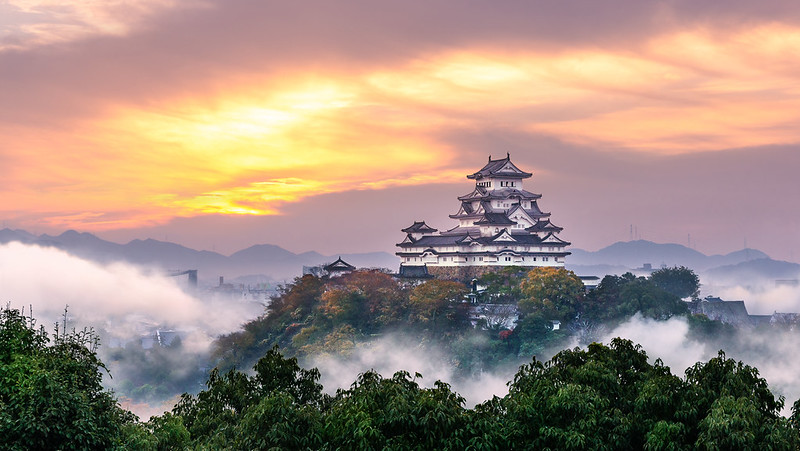
Japanese Castles: Symbols of Power and Honor
Japanese castles (城 shiro) are unlike the castles you see in fairy tales. Most were old wooden stockades from earlier centuries. Japanese castles were constructed as fortresses made mostly of wood and stone. They were built to watch over strategic places in areas such as river crossings, ports, or crossroads. Japan’s history is riddled with warring states led by powerful warlords. Many Japanese castles were destroyed during the Sengoku (Warring States) period, 1467–1603, but a lot were rebuilt later on. Many more still lie in ruins.
Probably the most significant difference between shiros and European castles are their roof designs. But they are still similar in many ways. Both had moats surrounding the castle to prevent access tunnels from being made, they had strong, tall walls for maximum protection, stairways were narrow and steep to make assault difficult, portholes were built for arrows and guns, main gate areas were built to double as traps, the walls were built with concentric rings for reinforcement, and the castles were usually on higher terrain such as on top of a hill to get a good vantage point for sighting enemies.
Some popular castles in Japan:
Himeji castle in Spring
Himeji Castle (姫路城 Himeji-jō)—built on a hilltop in Himeji, Hyōgo Prefecture in 1333, it is composed of 83 buildings and was equipped with advanced defensive strategies for the feudal period. With a brilliant white exterior, it resembles a bird taking flight. It is probably the largest, most visited castle in Japan. It’s been the setting for some of the biggest Hollywood movies like “The Last Samurai” starring Tom Cruise.
Hachiōji Castle (八王子城 Hachiōji-jō)—this castle, built by Hōjō Ujiteru (a samurai), is perched on Hachiōji mountain, a strategic location. When he left to help fight during the Seige of Odawa in 1590, only 1,300 men were left behind, and they had to defend themselves against 50,000 opposing forces. The castle was destroyed and was believed haunted. In recent years, the castle walls, bridge, and entrance were rebuilt. It still possesses remnants of the beauty and splendor it once had.
Edo Castle (江戸城 Edo-jō)—also known as Chiyoda Castle (千代田城 Chiyoda-jō), it was built on flat land in 1457. It was the residence of the shogun and the location for the shogunate. It became the Tokyo Imperial Palace during the Meiji Restoration period. Some moats and defensive walls of the castle still remain today.

